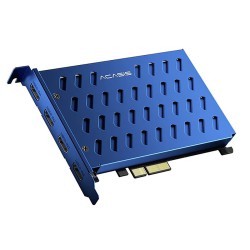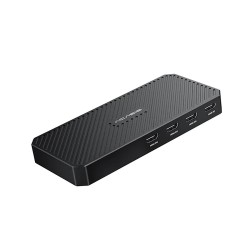Video capture cards
Video capture cards, also known as video capture cards, are devices used to record or capture video signals from a variety of sources, such as camcorders, game consoles, televisions or computers. These cards allow users to transfer video from one source to another for further processing, recording or streaming. Here are some key aspects related to video capture cards:
Ports and Interfaces:
Today's video capture cards are often equipped with USB, Thunderbolt, PCIe or HDMI interfaces.
HDMI ports are commonly used to capture video signals as well as audio.
Resolution and Frames Per Second (FPS):
Cards offer different levels of resolution, typically ranging from standard definition (SD) to high definition (HD) and even 4K.
The maximum frame rate is worth noting, as it affects the smoothness of the image.
Multiplexer support:
Some cards feature support for multiple sources simultaneously, which is useful in situations where the user wants to capture video from different devices.
Input Connectors:
The cards have a variety of input connectors, such as HDMI, DisplayPort, Composite, Component, USB, and Thunderbolt, allowing for variety in connecting different video sources.
Capture and Editing Software:
Many cards come with dedicated software for capturing, recording and editing video.
This software can also offer features such as live streaming, overlaying effects or recording voice commentary.
HDR and 3D support:
Some cards offer support for HDR (High Dynamic Range) and 3D technology, allowing the capture and playback of more advanced video content.
Operating System Compatibility:
It's worth checking if the card is compatible with the operating system you plan to use it on (e.g. Windows, macOS, Linux).
When choosing a video capture card, it's important to tailor the features and specifications to your individual needs, such as the type of source devices you're using, your intended use (recording, streaming, editing), and your budget.





